64 Parodia Cacti You Need to Grow (With Stunning Photos)
Hailing from South America, the charming Parodia genus consists of petite, ball-shaped cacti that are a joy for growers of all levels. With their clustered growth habit and showy blooms in vibrant hues, these little wonders are sure to captivate you from the moment you set eyes on them.
Perfectly spherical and adorned with spines, Parodia cacti aptly earn their common name “ball cacti.” Despite their small stature, they pack a vibrant punch with their eye-catching shapes, colors, and brilliant flowers in shades of yellow, orange, and red.
Easy to cultivate and maintain, Parodia cacti make an excellent choice for both novice and experienced cactus enthusiasts. They’ll reward you with their whimsical beauty without demanding too much of your time and effort. In this blog, we’ll explore the various Parodia species, their distinctive features, and the simple steps to keep them thriving in your home or garden.
Contents
- 1 Types of Parodia Cacti
- 1.1 Parodia alacriportana
- 1.2 Parodia aureispina
- 1.3 Parodia buiningii
- 1.4 Parodia chrysacanthion
- 1.5 Parodia comarapana
- 1.6 Parodia concinna
- 1.7 Parodia erinacea
- 1.8 Parodia formosa
- 1.9 Parodia fusca
- 1.10 Parodia gibbulosoides
- 1.11 Parodia haselbergii
- 1.12 Parodia hausteiniana
- 1.13 Parodia herteri
- 1.14 Parodia horstii
- 1.15 Parodia lenninghausii
- 1.16 Parodia linkii
- 1.17 Parodia maassii
- 1.18 Parodia magnifica
- 1.19 Parodia mairanana
- 1.20 Parodia mammulosa
- 1.21 Parodia microsperma
- 1.22 Parodia mueller-melchersii
- 1.23 Parodia muricata
- 1.24 Parodia nigrispina
- 1.25 Parodia nivosa
- 1.26 Parodia ottonis
- 1.27 Parodia oxycostata
- 1.28 Parodia penicillata
- 1.29 Parodia procera
- 1.30 Parodia ritteri
- 1.31 Parodia schumanniana
- 1.32 Parodia scopa
- 1.33 Parodia stuemeri
- 1.34 Parodia subterranea
- 1.35 Parodia tenuicylindrica
- 1.36 Parodia tuberculata
- 1.37 Parodia warasii
- 1.38 Parodia werdermanniana
- 2 Caring for Parodia Cacti: The Low-Maintenance Wonders
- 3 Propagating Parodia with Ease
Types of Parodia Cacti









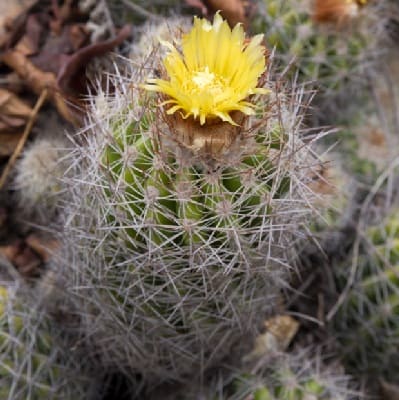

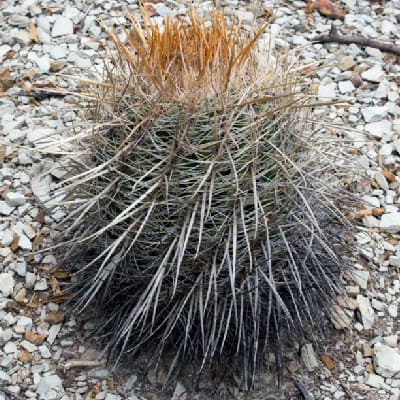
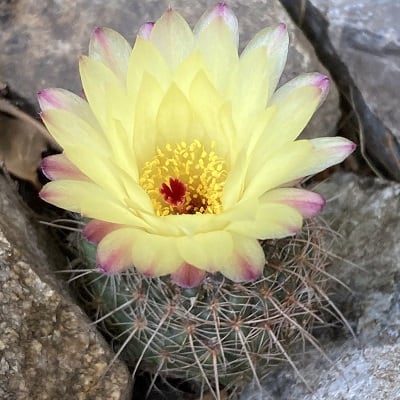



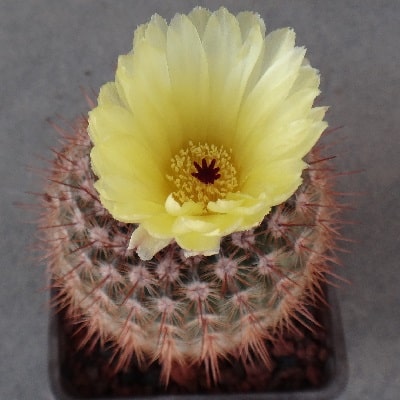

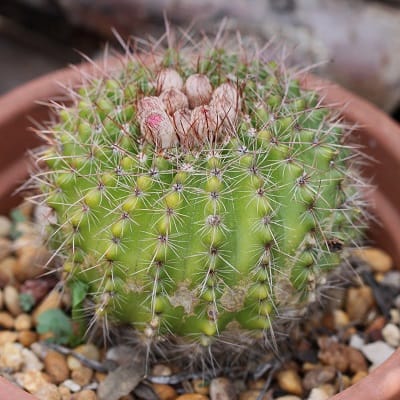







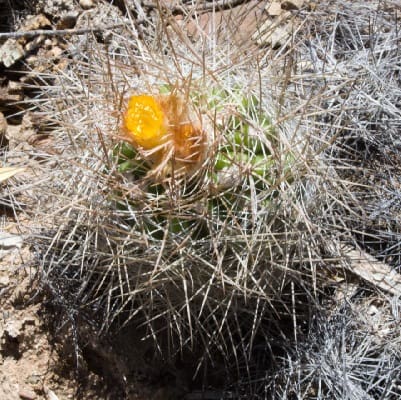

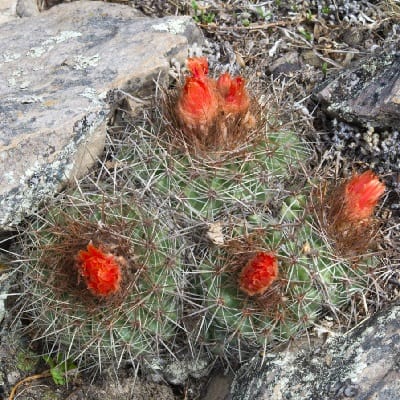


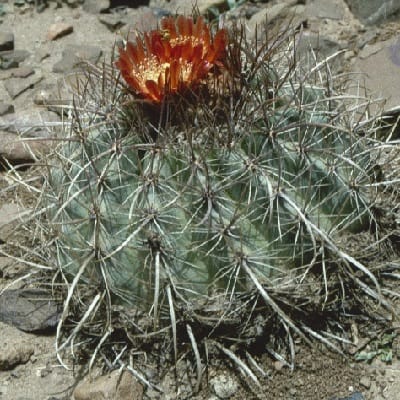
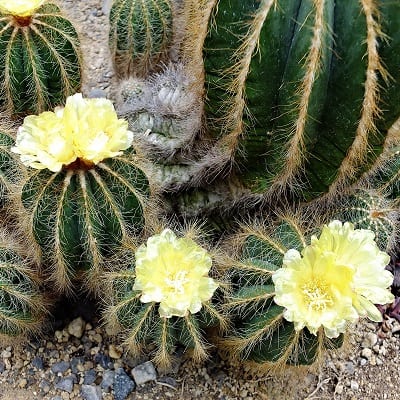



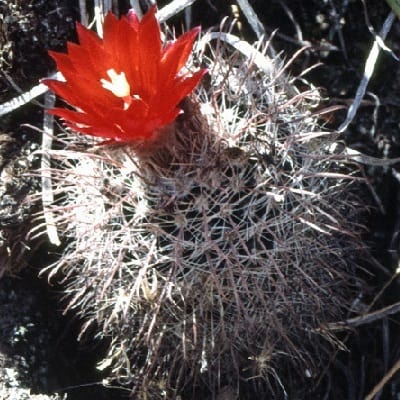


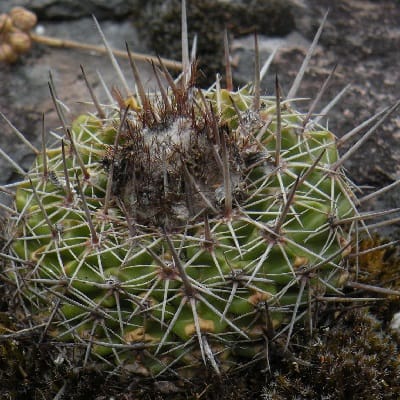



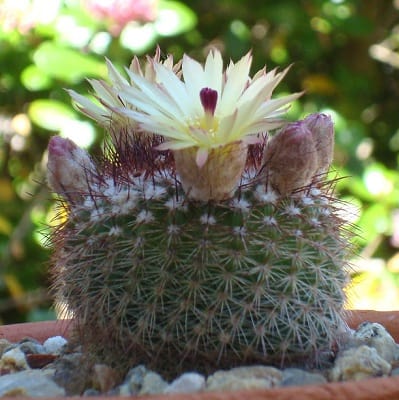



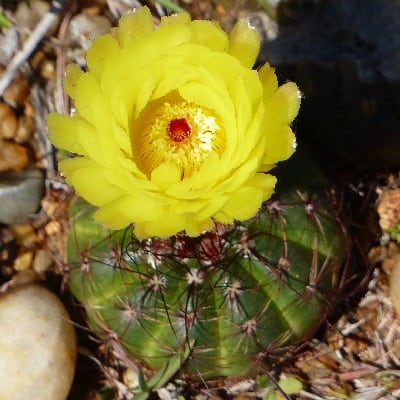
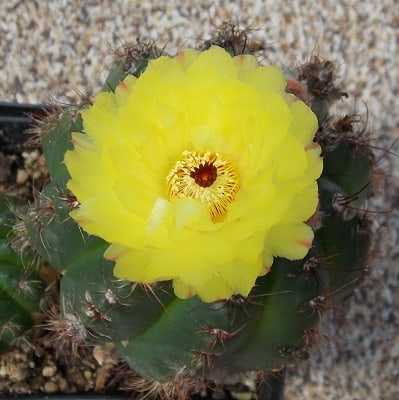
















Related Post:
1,000 Types of Cacti With Pictures
Parodia alacriportana

This variable species boasts small, solitary stems adorned with bright yellow flowers. Its 4-7 yellow central spines and around 20 thin radial spines create a striking display.
Parodia aureispina

Witness the charm of this cactus with its yellow and white spines and white hair. In the first couple of summer months, it bears cheerful yellow flowers.
Parodia buiningii

A solitary, flattened cactus standing just a few inches tall, with long, straw-yellow spines. Its large, showy yellow flowers and hairy fruit with black seeds will leave you in awe.
Parodia chrysacanthion

Imagine a globular to columnar cactus densely covered in bristle-like, golden spines. In spring, it crowns itself with a mass of large golden flowers, often accompanied by pale yellow wool.
Parodia comarapana

Prepare to be dazzled by the flowers of this species, ranging from orange tinged with red or rusty-red, to yellow or pink hues.
Parodia concinna

A small, flattened spherical cactus with bright yellow, funnel-shaped flowers reaching 3-4 inches across. Its ribbed body is a true delight.
Parodia erinacea

This simple, flattened-globular to short-cylindrical cactus is very woolly at the top, with undulating ribs and areoles nestled in the depressions. Its central spine isn’t much longer than the radials, and the yellow flowers with bright red stigma lobes are a sight to behold.
Parodia formosa

Solitary and noteworthy for its spiraled tubercles and short, white spines adorning the ribs. Despite its 5-7 inch (or larger) diameter, its golden-yellow flowers are relatively small compared to its body.
Parodia fusca

A small, solitary cactus with a globular stem, 4-5 inches wide and up to 7 inches tall. Its yellow or pale yellow flowers boast a typical glossy shine.
Parodia gibbulosoides

A low-growing species forming cushions up to 16 inches wide. Similar to Parodia formosa, but with smaller, numerous flowers – 5 or more borne together. The stems are densely covered by short clusters of spines, and the crown is shrouded in thick, short white wool.
Parodia haselbergii

A solitary, fast-growing little cactus. The spherical stem, more or less flattened, is bright green, almost completely concealed by dense spines, up to 4 inches tall, 6 inches in diameter. The crown is usually set at an angle to prevent water sitting. Bright orange to brick-red flowers up to 1 inch wide can last 1-3 weeks.
Parodia hausteiniana

A small, solitary cactus reaching only 2 inches in diameter with tiny yellow or orange flowers. Remarkable for its thick, yellow or amber-colored spines.
Parodia herteri

A large, usually solitary or slowly branching cactus from the base. The almost spherical stem can become shortly cylindrical when old, up to 6 inches in diameter and height with a shiny deep green skin and a depressed, white-grayish, woolly apex. Pale violet-pink to dark purple flowers with whitish or yellow centers bloom in spring.
Parodia horstii

A solitary or slowly clustering medium-sized barrel cactus with many flowers in early spring ranging from yellowish-orange to pink and violet-purple.
Parodia lenninghausii

A very popular cactus that glistens under a haze of harmless golden spines and produces silky yellow flowers with a lovely reflection in the petals, but only when mature (around 5 years old). Sometimes presenting monstrous and cristate forms, it’s worth the wait for its summer bloom.
Parodia linkii

Stems growing up to 6 inches in diameter, producing several yellow flowers together.
Parodia maassii

A small, globular cactus with long, hooked spines and yellow to red flowers. Its extensive distribution range has led to many local forms or varieties, each with particular characters.
Parodia magnifica

A bluish-green, geometric, globular cactus with wool that grows in clusters and produces brilliant yellow flowers. It develops a slight depression on the crown which may become distorted with age. Glistening under pale yellow spines, cristate forms are available but usually grafted.
Parodia mairanana

A small, free-flowering cactus with many apical flowers, mostly orange tinged with red or rusty-red, but plants with different flower colors are often found in cultivation.
Parodia mammulosa

Usually a solitary cactus more or less covered by interlacing spines. It has 18-25 ribs, 2-4 central spines, and 20-30 radial spines. The pale pink to golden yellow flowers, beautifully emphasized by the purplish/red stigma lobes, are around 2 inches in diameter with a short tube covered in white wool and brown bristles.
Parodia microsperma

A compact small to medium-sized perennial cactus densely covered in white, yellow or brown spines and red central spines, some hooked. True to its name, it bears blood-red, occasionally yellow flowers in spring and has small seeds.
Parodia microsperma subsp. horrida

This subspecies has reddish-grey cylindrical stems with either hooked or straight central spines, rigid radial spines, and yellow flowers.
Parodia mueller-melchersii

Flowers range from creamy yellow to lavender. The spines also vary from yellowish-white to dark red-brown.
Parodia muricata

A rare species closely related to Parodia carambeiensis that flowers early in life. The stem is initially globular, glaucous bright green, often depressed at the apex, but becomes more cylindrical as it grows, ultimately reaching 8 inches tall and 8 inches wide in cultivation. Large yellow flowers up to 1 inch long adorn the apex.
Parodia nigrispina

A very spiny species forming more or less compact clusters with age. Often synonymized with Parodia schumanniana, but it has a wider, lower-growing body, darker brownish-black spines, and comes from a different habitat. Funnel-form yellow flowers up to 3 inches long and wide.
Parodia nivosa

A small, ovoid perennial with a solitary green stem covered in fine, stiff white spines 0.5-1 inch long. Bright red flowers emerge from the white, woolly crown in summer.
Parodia ottonis

A common, attractive, dwarf, clumping cactus that flowers at an early age. The stem is spherical, tapered at the base, eventually becoming cylindrical with a flattened top. Bright satiny yellow flowers, or in one rare variant, orange-red. Pericarpels and tube with dense white to brownish wool and bristles.
Parodia oxycostata

Another common, attractive, dwarf, clumping cactus that flowers early. The flattened globose to globose, grey-green stem reaches 4 inches tall and wide. Bell/funnel to urn-shaped yellow flowers up to 2 inches wide are borne apically, with pericarpels and floral tubes having scales, white wool, and reddish-brown bristles in clusters.
Parodia penicillata

Usually a solitary, small-growing cactus with a pale or bright green, spherical stem later becoming cylindrical, growing up to 16-20 inches tall and 4 inches wide. Funnel-shaped, orange-yellow or brilliant red flowers form an apical circle.
Parodia procera

A cute lime green cactus with beautiful brownish-red spines and yellow to orange flowers.
Parodia ritteri

An adorable columnar cactus with beautiful rose to whitish spines and blood-red to yellowish-brown flowers.
Parodia schumanniana

One of the larger species in the genus, with a dark green, rounded body densely clothed in yellowish to brownish spines growing up to 6 feet tall. Large yellow blooms develop at the crown in summer, followed by round green fruit.
Parodia schumanniana subsp. claviceps

A smaller subspecies, less than 20 inches tall, with areoles only 1-2 inches apart, and 1-3 central spines.
Parodia scopa

A silvery spined cactus often clustering with showy yellow flowers. The stems are almost hidden by soft tufts of bristly spines in a mixture of white and red-brown, varying from plant to plant.
Parodia stuemeri

A distinct solitary species that may form small or huge clumps at times. Spines range from dusky-yellow to nearly black, and flowers may be yellowish, orange or reddish, up to 2 inches long.
Parodia subterranea

An amazing white-topped Bolivian species that reputedly grows almost completely hidden below the soil (in habitat) and is extremely hard to find unless blooming. Flower color is usually red but can range from yellowish-orange to dark purple.
Parodia tenuicylindrica

One of the smaller species with tiny yellow red-brown spines and white wool reminiscent of a Frailea. Bright lemon yellow flowers 1-2 inches tall and 2-3 inches wide with dark red stigmas. Pericarpel and flower tube with purple scars almost entirely filled with white wool and yellow bristles.
Parodia tuberculata

A simple or rarely clustering globular species with small orange-red blooms.
Parodia warasii

A short columnar cactus usually solitary or slowly clustering, related to the well-known Parodia leninghausii and similar to Parodia magnifica but with a bright green surface (not bluish-green). Stems become tall and erect as they age, up to 24 inches tall and 12 inches wide. Large and very floriferous, producing big yellow flowers with a satin sheen around the crown in summer.
Parodia werdermanniana

A poorly known Uruguayan species with delicate, colorful spines varying from yellowish-white to brown. Its color and morphological variants were early classified as different varieties in garden trade, but are now considered part of a multiform species linked by intermediate populations. Very showy, glossy yellow flowers.
Caring for Parodia Cacti: The Low-Maintenance Wonders
If you’re a cactus lover, you’ll adore the easy-going Parodia cacti! These little ball-shaped plants from South America don’t demand much, making them perfect for beginners and experts alike. Get the basics right, and they’ll thrive without a fuss. Let’s dive into their simple care needs!
Lighting Needs
Parodia cacti are true sun-worshippers, but they don’t like scorching heat. The ideal spot is one that gets bright, indirect sunlight. In the early morning and late evening, you can give them some direct sun, but avoid exposing them to intense midday rays.
If you’re growing Parodia indoors, choose a pot that’s easy to move around. That way, you can shift its position to catch the best light throughout the day. These cacti won’t be happy tucked away in a dim, damp corner.
Watering Wisdom
Overwatering is the enemy of ball cacti! They prefer a gentle drink, so water with caution. During spring and summer, only water when the top inch of soil is dry. In winter, when the plant is dormant, it needs very little moisture.
Drainage is crucial, so use a pot with plenty of holes to allow excess water to escape. This prevents root rot and keeps your Parodia happy and healthy.
Soil Secrets
These cacti love a dry, airy soil mix. A regular cactus potting mix is perfect, or you can make your own by mixing in pumice or sand to increase aeration. Slightly acidic soil is ideal for Parodia.
Fertilizing Needs
Parodia cacti aren’t heavy feeders, but a light fertilizer during the growing season can give them a boost. Dilute a cactus fertilizer and apply it occasionally, along with a good quality soil mix, to help your plant reach its full potential.
Pest and Disease Patrol
Parodia cacti are generally resistant to diseases, but overwatering can lead to mealybugs or root and stem rot. Careful watering is key to keeping these problems at bay.
Propagating Parodia with Ease

One of the joys of growing Parodia is how easy it is to propagate from offsets – little plantlets that form in mature clusters. Follow these simple steps:
- Gently remove an offset from the parent plant and let it dry out on a towel for a few days until the wound calluses over.
- Once calloused, pot the offset in a cactus mix and mist with a diluted fertilizer.
- Place in a warm spot with good air circulation.
- Roots should emerge within days or weeks.
- Once established, you can transplant your new Parodia into its permanent home.
Repotting is best done in warmer months using a fresh, dry cactus mix. Gently remove any rotten roots or stems, and consider applying a fungicide to prevent issues. Avoid watering for a week after repotting to allow the plant to settle in.
With their low-maintenance needs and charming shapes, Parodia cacti make delightful additions to any plant collection. Give them the right conditions, and they’ll reward you with years of easy-going growth and vibrant blooms!
